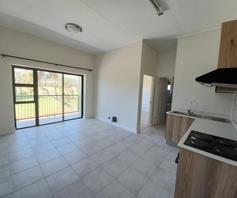The cost of building is expected to grow by only 3.56% during the current calendar year, according to the latest figures published by the Bureau for Economic Research in Stellenbosch (BER). In fact, the next 3 months are forecast to see a stagnation in building costs.

According to Björn Laubscher, the Managing Director at Mirfin Valuation Services (Pty) Ltd. this comes off the back of declining building confidence and an already weak construction sector that in 2022 was still 30.2% below its peak in 2016.
READ: Building insurance: A step-by-step guide to determine your home's coverage needs
Since the replacement value of buildings is directly related to the cost of construction, your buildings insurance should not see any significant increase in the year ahead. But, out of habit - and to play it safe -, we escalate our sums insured by 10% year after year without much thought. After all, isn’t it better to be slightly over-insured than under-insured?
Not if you consider the compound effect of over-insuring year after year, which can quickly result in a double-digit rate of overspend within just a few years!
Therefore, as the insured, it is up to you to determine an appropriate escalation rate and apply the brakes when you feel that your sum insured is getting out of hand. The best way to stay informed in this regard is to consult a reputable property valuer, as the cost of the professional advice obtained is often far less than the cost of over-insurance, especially in community schemes where the units and common areas are covered under the body corporate policy.
READ: A four-point guide on insurance for first-time buyers
Let’s consider this example: In July 2020, the body corporate of Arendelle in Knysna took out buildings cover for R100 million. The sum insured was escalated by 10% every year since and currently stands at R133 million, with an annual premium of R120,000. But in reality, the cost of building only grew by 20% in the 3 years since, meaning that the body corporate only needs to be covered for R120 million. By year 4, it will have overspent on insurance by R30,000, give or take. In contrast, a professional valuation that costs a fraction of that amount could have saved the body corporate a considerable sum that could have been better used for maintenance and upgrades.
Over-spending on your insurance premium won’t result in extra claim pay-out, but you will be punished for being under-insured in the event of a claim. For this reason, bodies corporate are required by law to have a valuation done at least every 3 years and to have the proposed increase in sum insured approved by their members at the annual general meeting.
READ: How to get a better deal on your home insurance
Trustees have a fiduciary duty to act in the best interest of the body corporate and its members. This includes seeking the advice of a professional valuer, preferably one specialising in community living, before presenting the adjusted replacement value to the AGM. Trustees are within their rights to request valuation updates at any time during the three-year valuation cycle at no additional cost. Some valuation companies provide this service without asking and in time for policy renewal.
Many insurance customers and body corporate trustees are unaware that they have the right to adjust their sum insured at any time during the policy period, not just at annual renewal time. It is never too late to contact your trusted valuer and make the necessary adjustment that will save you money or ensure that you are adequately insured.
To learn how to maintain fiduciary compliance at your fingertips visit Mirfin Dashboard.
READ: Insurance| How to avoid the pitfalls of underinsuring the contents of your home
In a article published on 3 Sep 2020, Adrian Goslett Regional Director and CEO of RE/MAX of Southern Africa, explains the importance of knowing exactly what your insurance covers.
If you’ve done some renovations or improvements, here’s what you should check when it comes to your home insurance policy. To start with, it’s important that homeowners understand the two different types of home insurance:
Buildings insurance.
As the name suggests, this covers the structure of your home and its outbuildings, and their permanent fittings, against fire, damage and theft. If you own a house, make 100% sure you have buildings insurance. Regardless of whether you have a bond or not.
Home contents insurance.
This covers your stuff. If you could turn your house upside down and shake it, what falls out is home contents – clothes, furniture, TV, wine glasses, the lot. A lot of people don’t have home contents insurance.
Do a post-reno buildings insurance review
If you’ve got a bond, it’s compulsory to have buildings insurance. This is usually taken care of by your bank, and the premium is ‘hidden’ in your monthly bond repayment. But you’re not obliged to accept your bank’s quote, and it’s possible you’ll get a cheaper premium from the insurer that covers the rest of your valuables. So do shop around!
Insure for replacement value, not market value
A building’s insured value isn’t its market value. Buildings insurance should cover what it would cost to rebuild your property from the foundations up, including your boundary walls, solar panels, swimming pool, taps and tiles. It should even include what you would need to pay in a worst case scenario, like demolition charges and waste removal, and the professional and municipal fees that are part of the building process.
Review your home contents coverage
If you’ve built onto your home, and filled the new extension with brand-new furniture and appliances, this is a great time to update your home contents insurance as well. As with buildings insurance, the key is to make sure you cover your home contents for their current replacement value – don’t guess. And remember, insurers can only protect what they know about. It helps to keep the original receipts for items like big screen TVs, so that you can prove their value if you need to claim. To help you assess your home contents correctly, here’s a handy home contents inventory.
Want all the latest property news and curated hot property listings sent directly to your inbox? Register for Property24’s Hot Properties, Lifestyle and Weekly Property Trends newsletters or follow us on Twitter, Instagram or Facebook.








